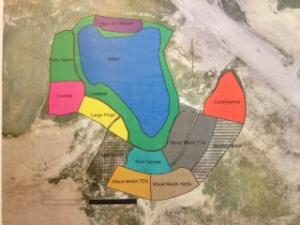Innovation Anthology #675:

In the summer of 2014, Eckehart Marenholtz researched weed suppression at the Genesee Mine reclamation site called the East Wetland.
Eckehart is a forester and reclamation specialist.
For his research, he planted a mix of balsam poplar and willows around the small lake created after coal mining was finished.
On the uplands, he planted aspen and white spruce seedlings.
But as Eckehart explains, competition from weeds and grasses can seriously impede the growth of the young tree seedlings.
ECKEHART MARENHOLTZ: For example, with the deciduous species, with aspen, simply shading, so removing the light from the trees is probably one of the bigger factors. There could also be below ground competition and there could also be competition for nutrients and for water. So when we were planning this new reforestation area, we were looking at using two main strategies to deal with the competition. We wanted to plant trees that were physically bigger than the weeds would be in the first season and test different ways of suppressing the weeds.
Eckehart Marenholtz compared four different methods to suppress weeds and grasses.
Thanks today to Capital Power
FOR INNOVATION ANTHOLOGY,
I’M CHERYL CROUCHER
Guest
,
, , , ,
Sponsor
Capital Power

Program Date: 2015-03-24